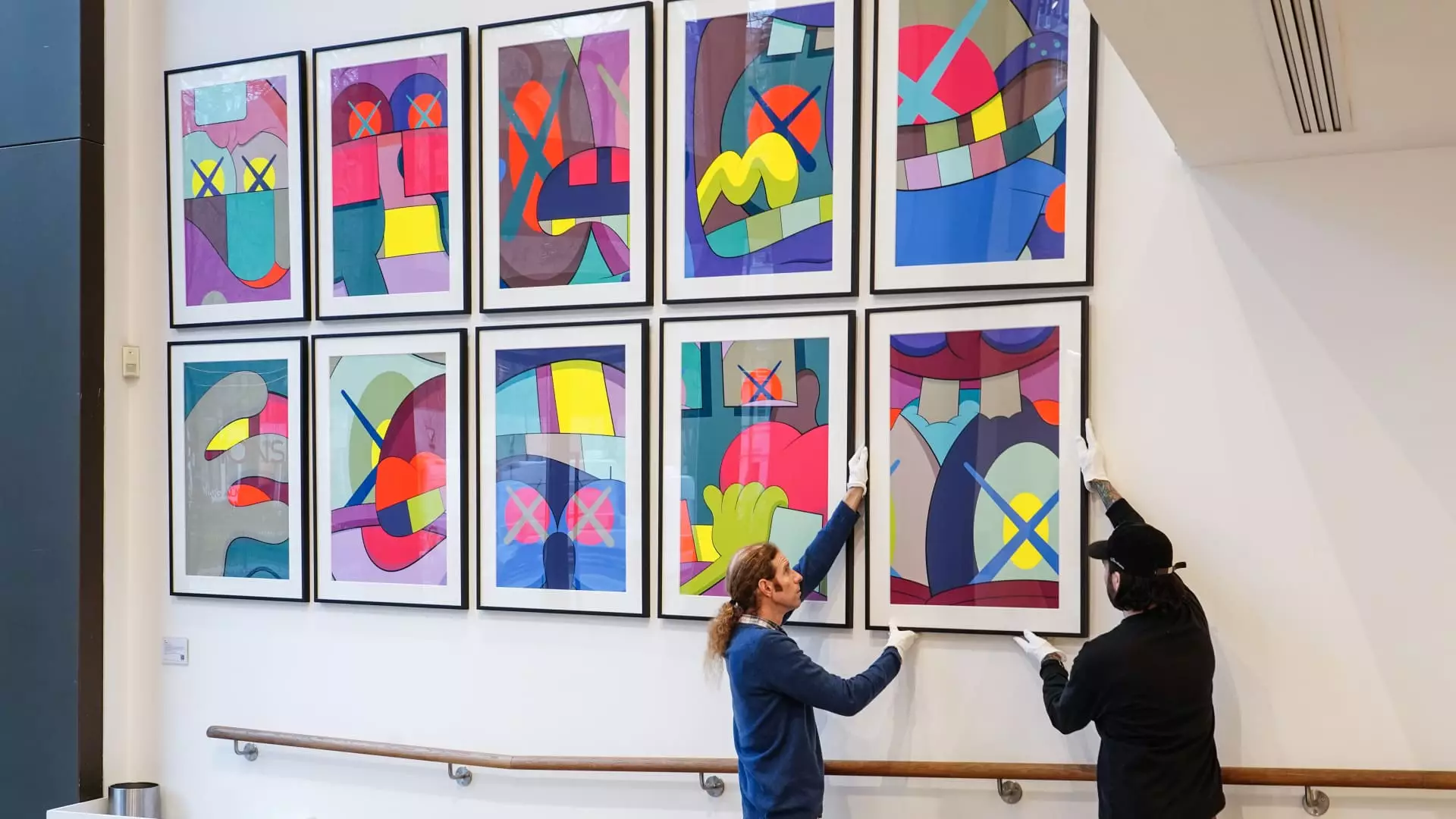In recent years, the venerable world of art auctions has exhibited symptoms of profound instability. For over a decade, this once-flourishing sector—dominated by industry giants like Sotheby’s, Christie’s, and Phillips—has been grappling with a precipitous decline in sales. The first half of 2025 reflects this downward trend, with figures plummeting to levels unseen since the aftermath of the 2008 financial crisis, yet notably more significant than even the pandemic-affected 2020. Such persistent erosion suggests more than mere cyclical fluctuations; it hints at fundamental cracks in the very structure of the traditional art economy.
What underlying causes fuel this collapse? At first glance, macroeconomic concerns dominate the narrative—lingering fears of global recession, inflationary pressures, and geopolitical tensions. These factors foster caution among investors and collectors, especially those betting big on the high-priced contemporary and postwar artworks. Yet, this explanation oversimplifies a complex cultural dynamic. It overlooks a seismic shift in the fabric of wealth itself and the values that drive the art market’s traditional elite.
The Divergence Between Wealth and Cultural Taste
Despite the visible decline in auction figures, the net worth of the world’s wealthy elite continues to grow at an astonishing rate. Over the past few years, the top 10% of Americans have accumulated an additional $37 trillion, fueling record levels of financial capital. Stock markets soared, real estate valuations reached new heights, and investments in startups and private businesses surged. This soaring economic prosperity, however, does not translate into increased art liquidity.
Financial scholars like William Goetzmann have long acknowledged a close correlation between personal wealth and demand for art—yet recent data indicates a troubling anomaly: these patterns are fragmenting. The 300-year-old link seems to be weakening. Why? Because the nature of wealth itself is evolving, and with it, the very taste for traditional art is being questioned. Rich individuals are less likely to buy artworks at sky-high prices—especially as some of their accumulated assets are shifting toward more liquid and versatile forms, such as luxury jewelry, collectibles, or experiential assets.
This divergence raises the question of whether the collapse in auction sales is just a temporary blip or the symptom of a deeper transformation. The evidence points toward something more profound: a cultural recalibration. The wealthy are no longer merely interested in displaying their wealth through expensive paintings; they are seeking newer, more flexible ways to showcase taste and status, often favoring digital assets, bespoke experiences, or high-end luxury goods that reflect a more diverse set of cultural values.
The Generational Shift and the Role of Digital Transformation
A critical factor reshaping the art market landscape is a generational divide. The art-buying habits of baby boomers—the primary patrons of the 20th century—are rapidly fading into obsolescence. Boomers are downsizing, divesting, or leaving behind large collections that no longer hold the same appeal for their heirs, many of whom are disinterested in traditional art forms. Millennials and Generation Z, by contrast, grew up immersed in a digital universe, where art manifests not just in galleries and auctions but across social media platforms, online marketplaces, and digital collections.
This shift manifests in the rising popularity of online auctions, which now account for a significant share of total sales. Younger collectors favor convenience, transparency, and immediacy—attributes that the old, brick-and-mortar auction houses are struggling to deliver on. The sale of jewelry, luxury fashion, and collectibles—items that are often more accessible and relatable—has seen a surge, illustrating a pivot toward broader definitions of luxury and cultural capital.
The rise of online platforms also democratizes access, disrupting the exclusivity that has historically defined high art. With most bids now happening via smartphones, the allure of owning a rare diamond or limited-edition sneaker resonates more with the digital-native generation. This trend signals a potential erosion of a once-invulnerable art market, whose valuation increasingly hinges on tangible, physical artworks rather than digital or socially driven assets.
The Cultural Economy Is Rebalancing
The art world’s instability may be symptomatic of an impending cultural rebalancing. As wealth becomes more diffuse and values shift, the traditional high-end art market—once a symbol of exclusivity and status—may no longer be the dominant measure of cultural influence. Instead, a broader ecosystem comprising luxury jewelry, collectibles, limited-edition sneakers, and digital art is gaining prominence.
Auction houses like Christie’s and Sotheby’s are scrambling to adapt to this new reality. Their efforts to expand online catalogs, offer lower-priced items, and diversify into luxury and collectibles have flavor success even as the art segment suffers. Jewelry and luxury accessories—a category once considered peripheral—are now experiencing a remarkable boom, especially among younger women and online buyers.
Yet, this transformation raises hard questions about cultural legitimacy. Is the decline in high-priced art a sign that society is moving away from traditional notions of cultural achievement? Or is this merely a shift in how the wealthy leverage their influence—embracing more diverse, accessible forms of expression? From a progressive perspective, this change should be viewed as an opportunity to democratize cultural capital, breaking down the barriers that historically kept art confined to the elite.
The potential problem, however, remains that this shift could exacerbate societal inequalities, favoring a new generation of consumers whose tastes are shaped by social media rather than accumulated cultural heritage. Whether this evolution signifies progress or signals a cultural impoverishment depends largely on how the industry adapts and whether institutions can embrace inclusivity without losing their integrity.

